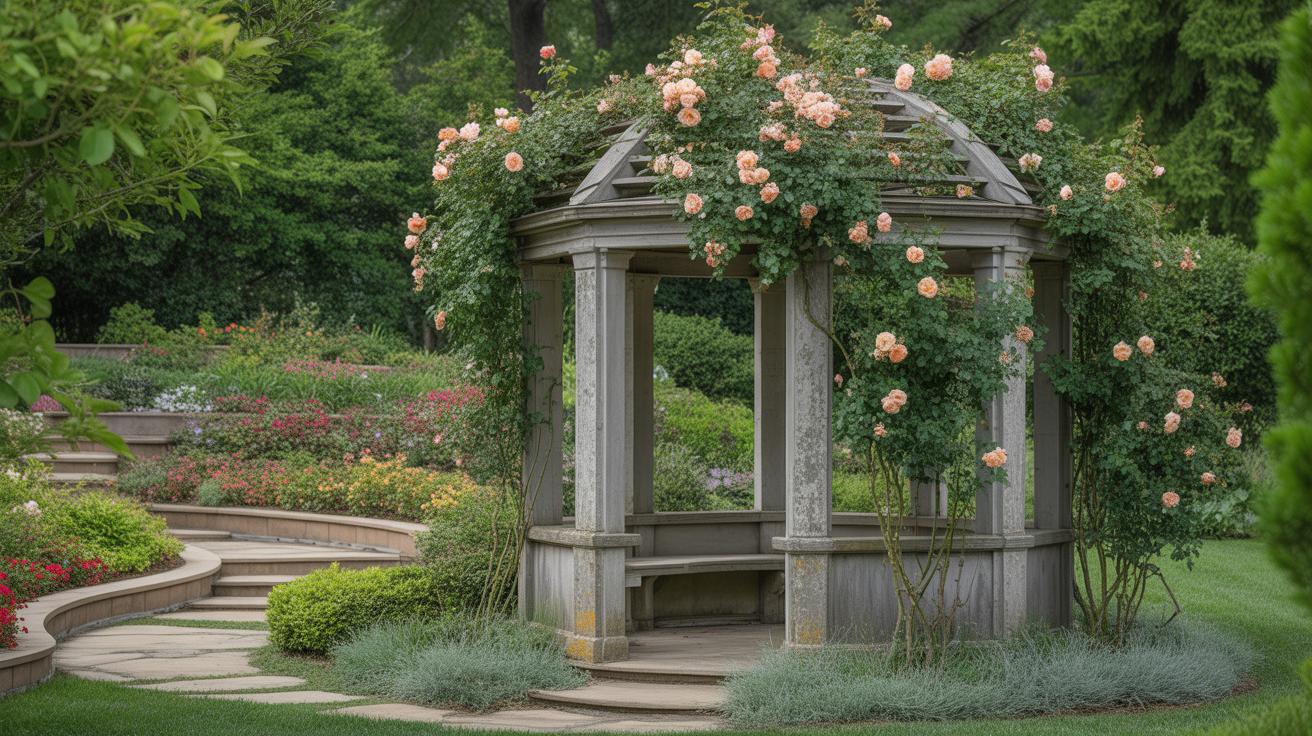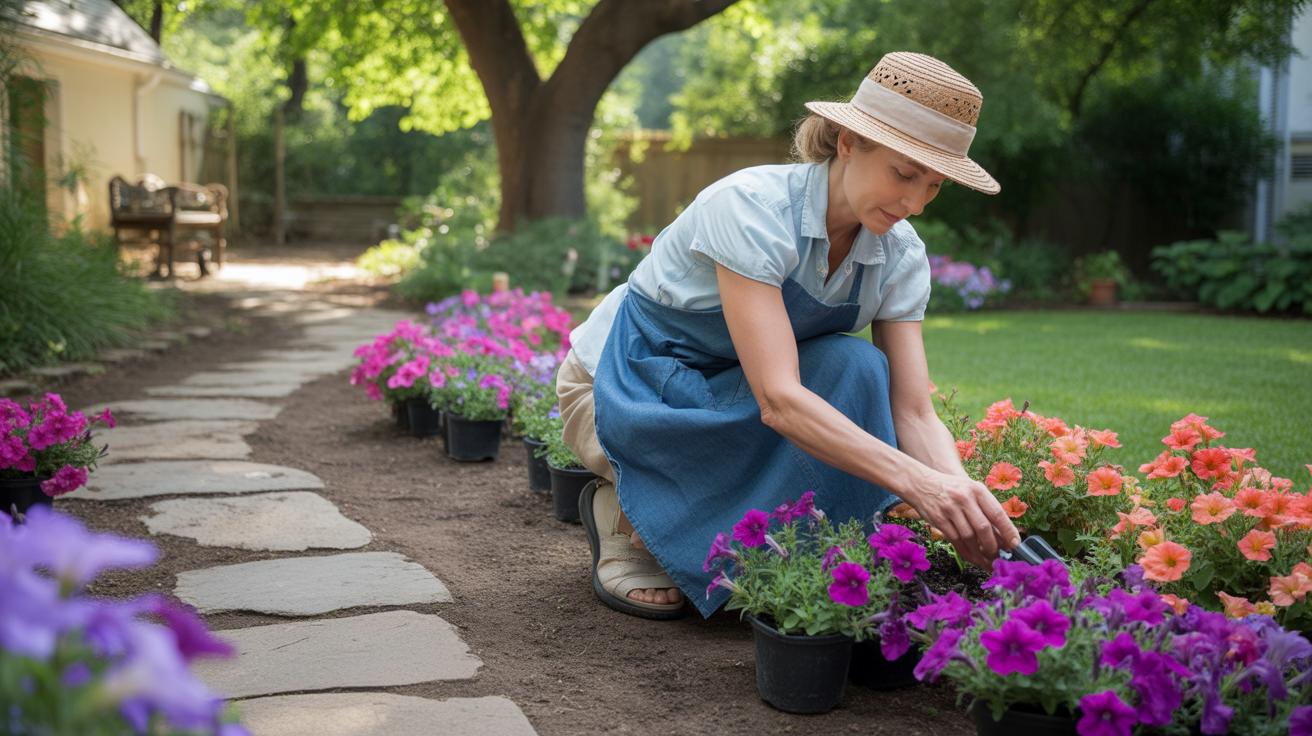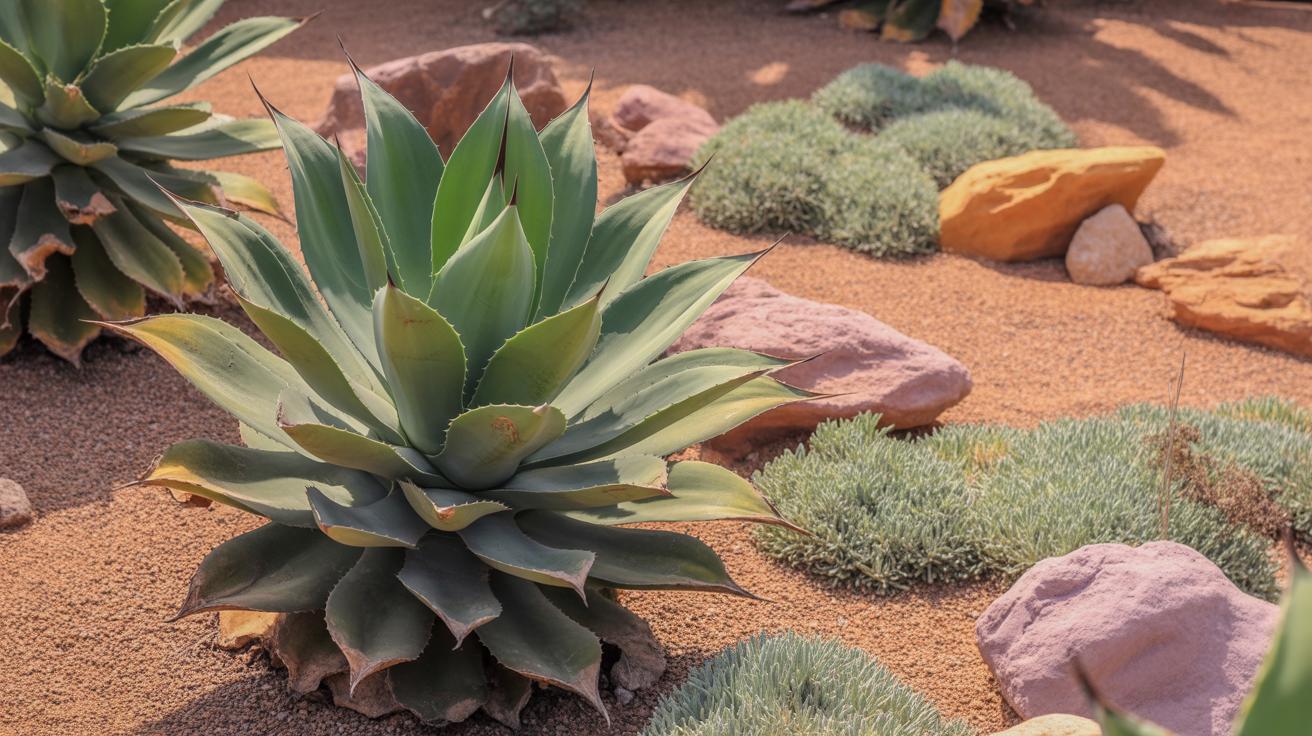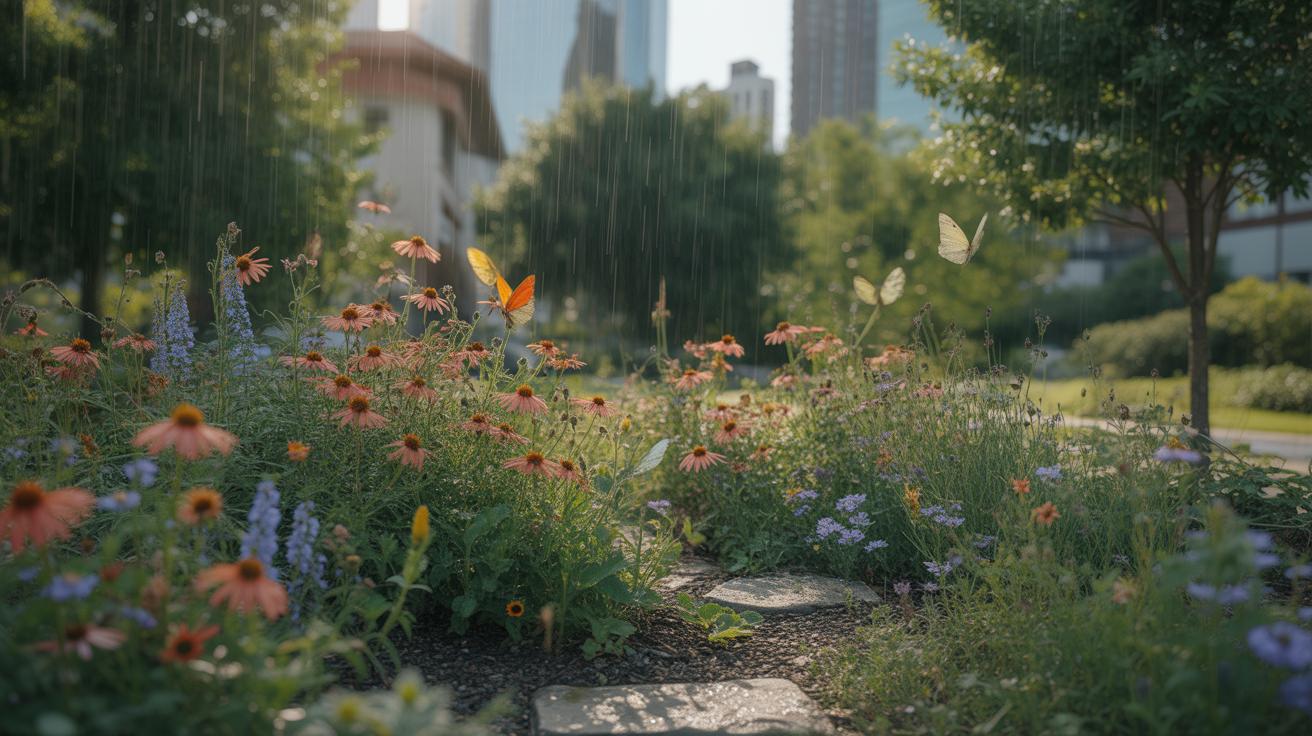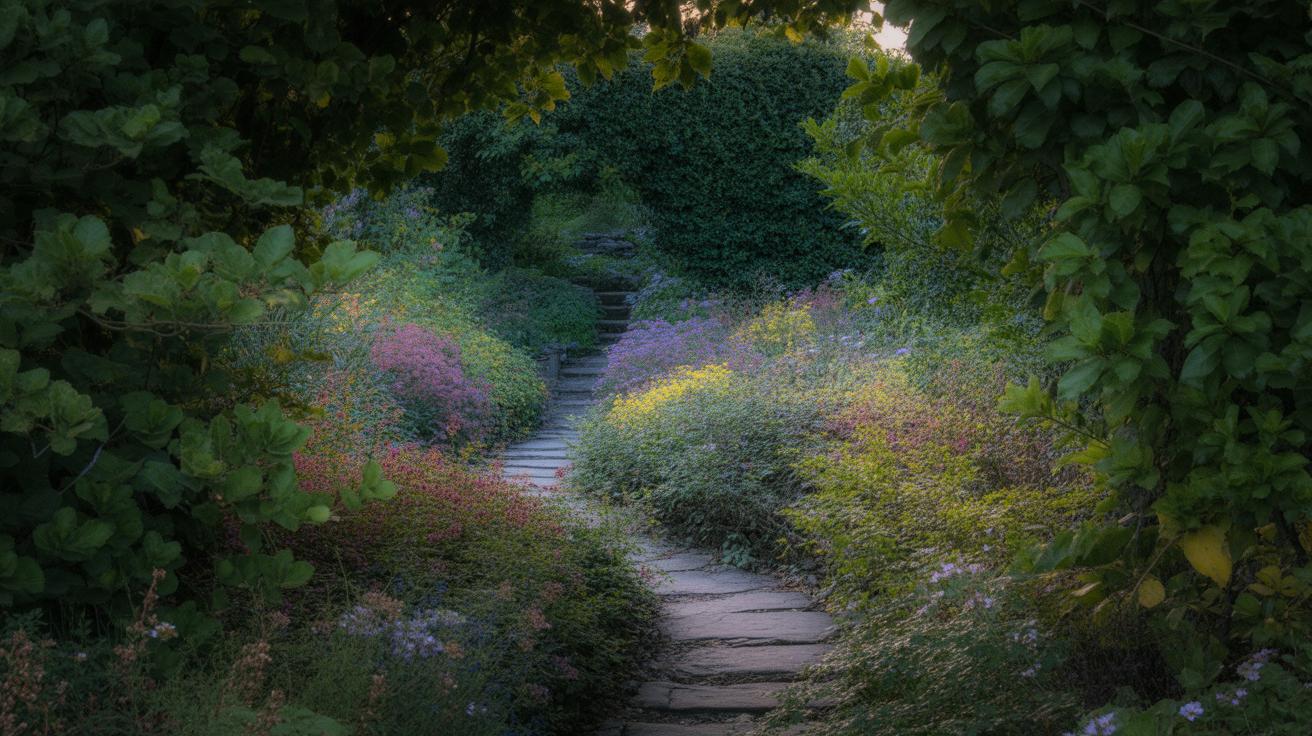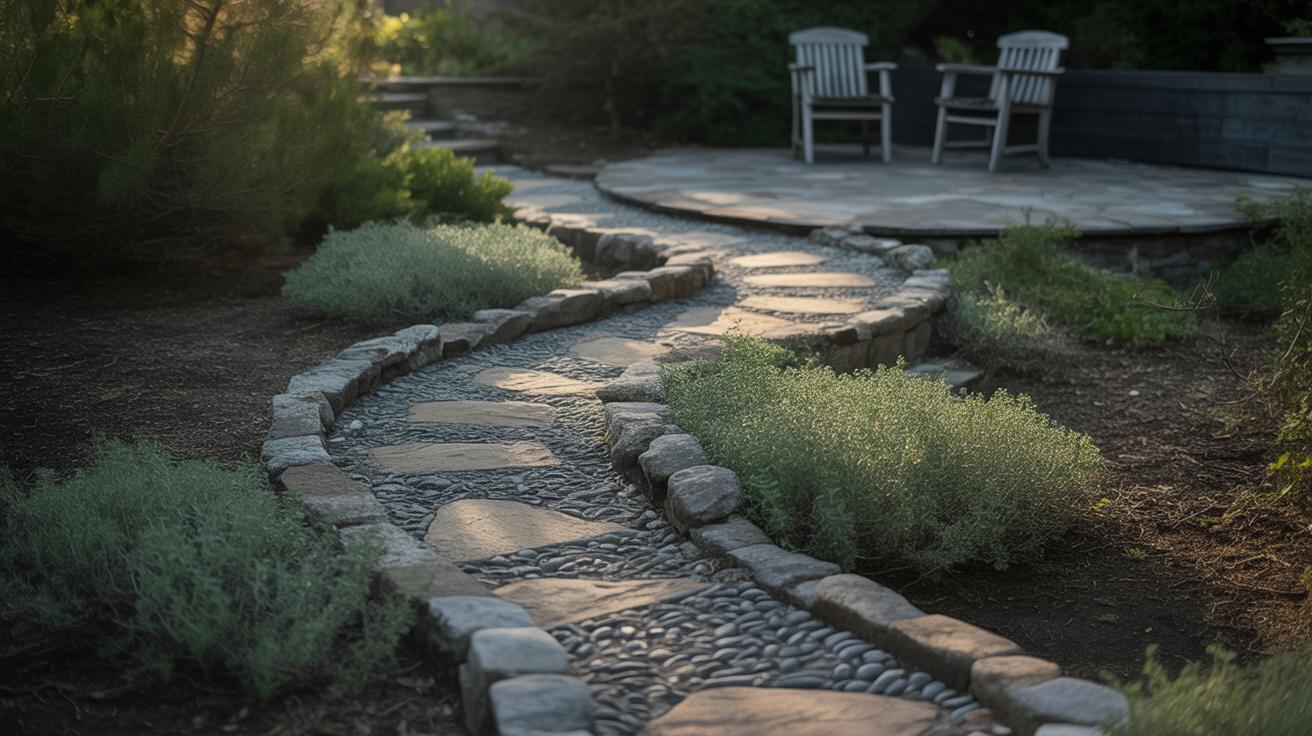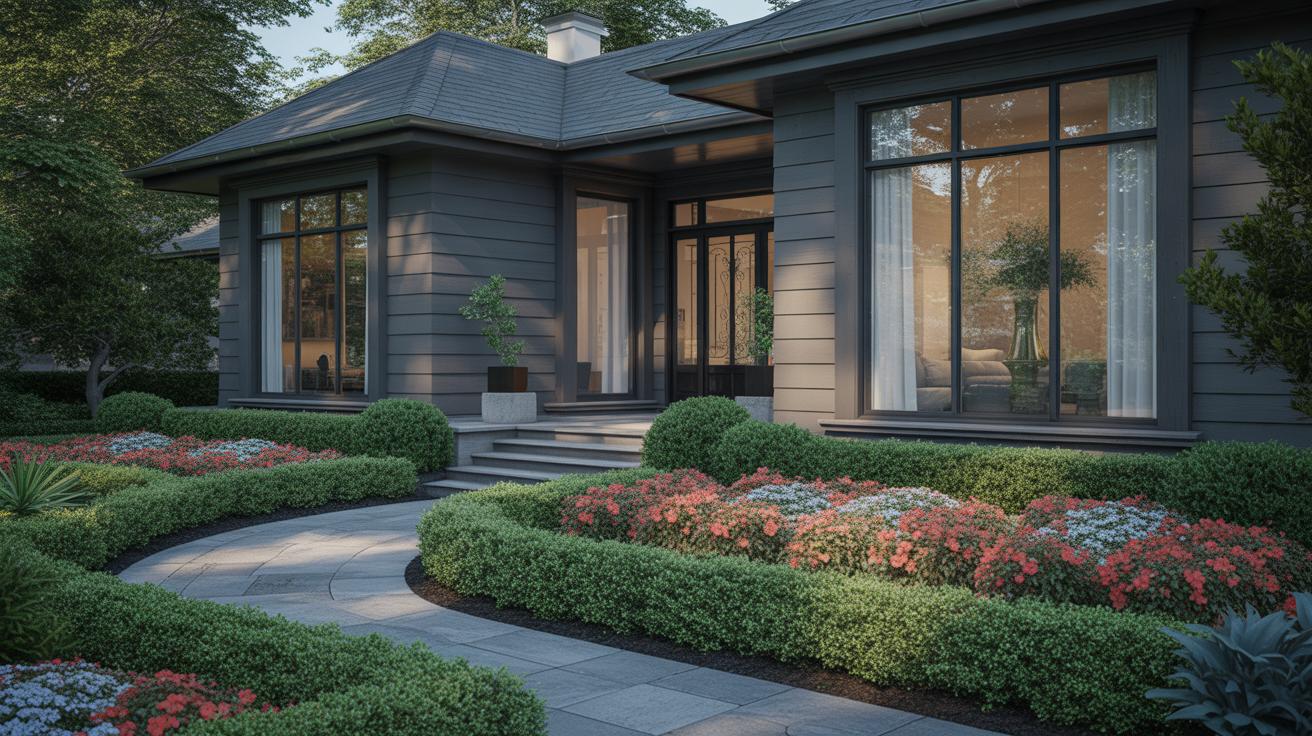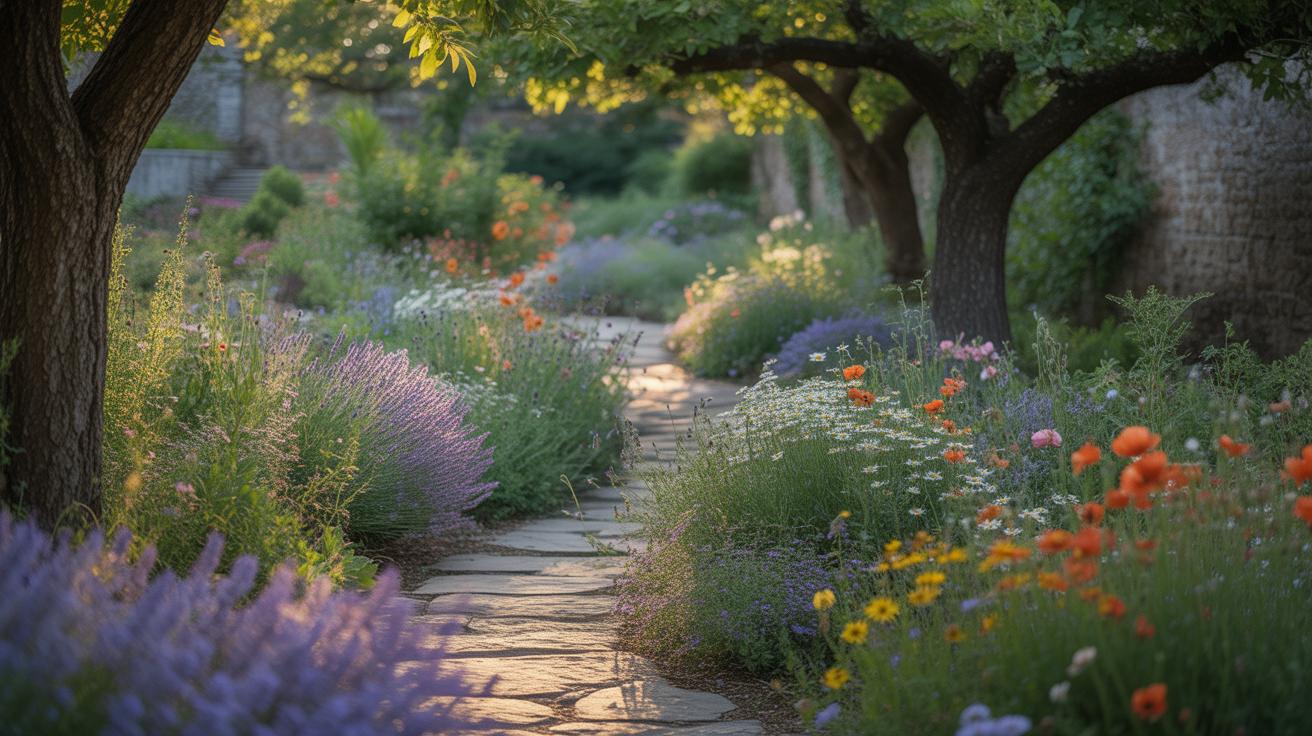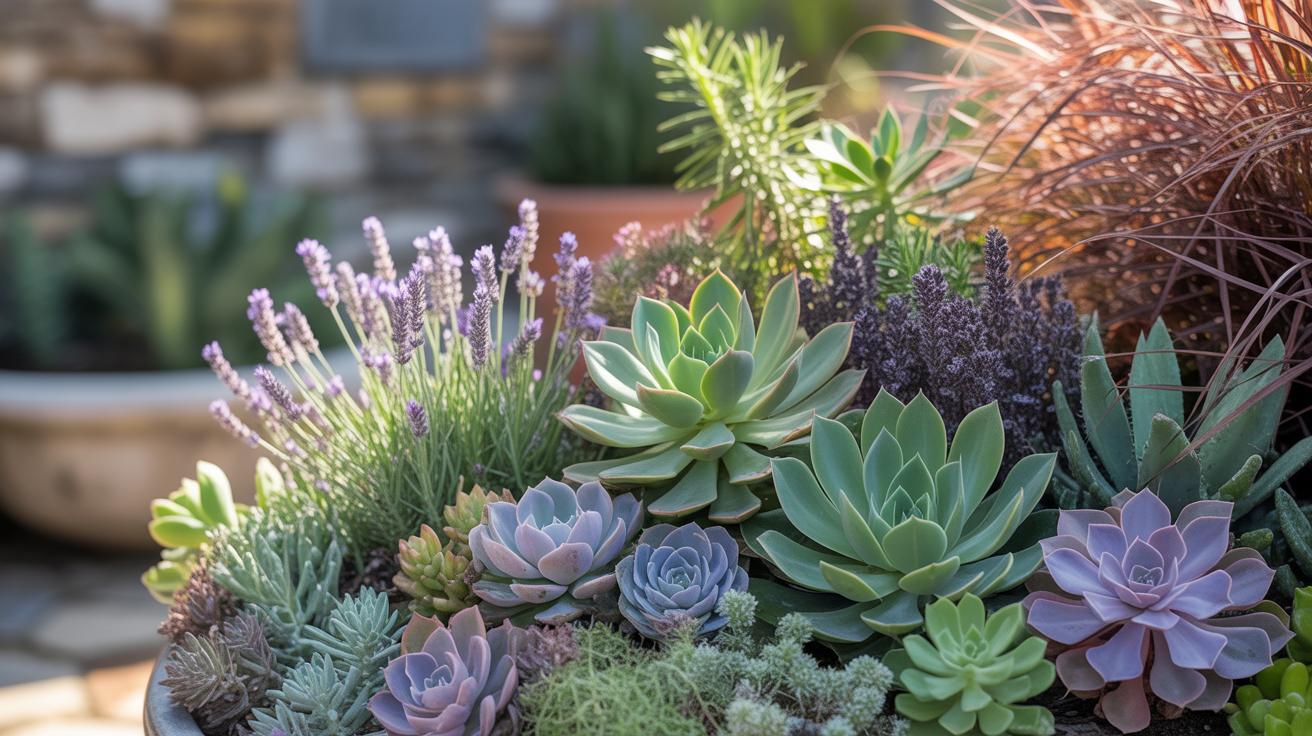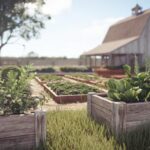Introduction
Large backyard landscaping can transform your outdoor space into a welcoming and functional area. It allows you to create different zones for activities, enhance natural elements, and add aesthetic appeal. This guide covers practical ideas and clear steps to help you shape your backyard effectively.
Planning is key when dealing with a large area. You will explore how to understand your land, select plants, install features, and maintain your space. The goal is to help you design a backyard that fits your needs and looks great year-round.
Understanding Your Land
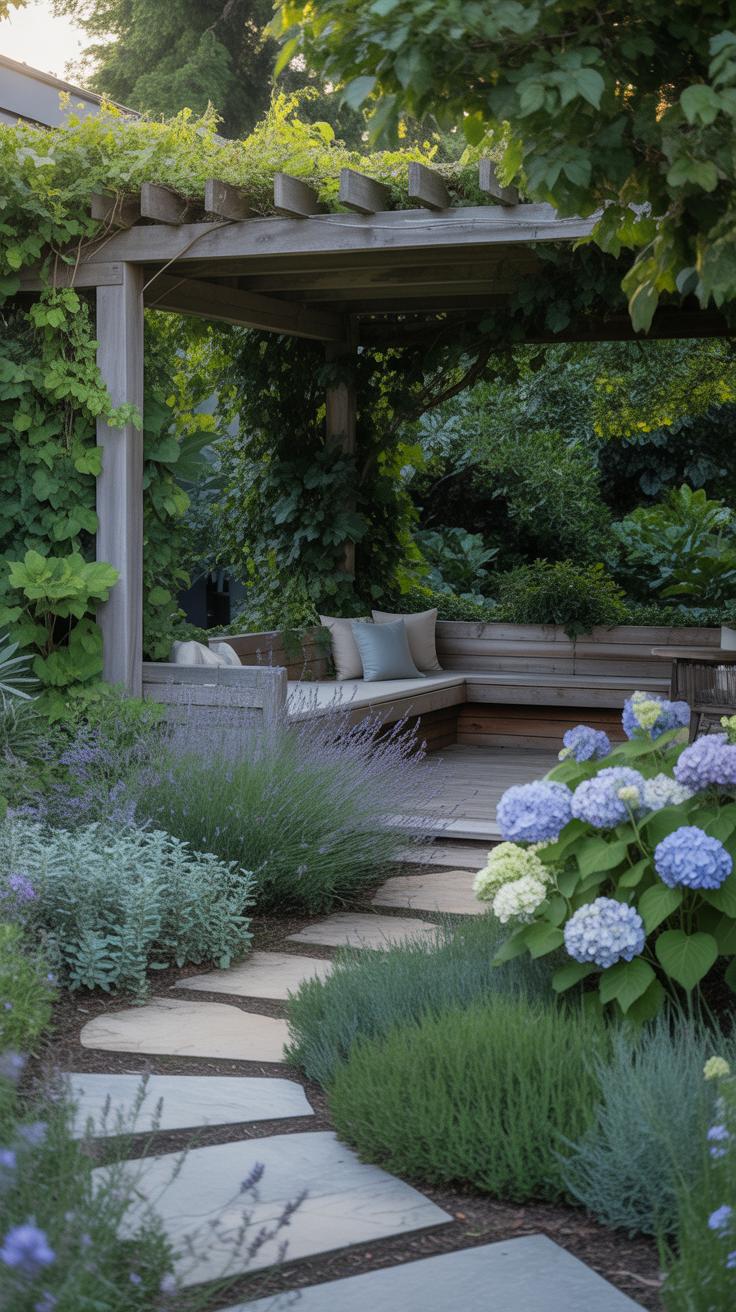
Soil and Terrain Basics
Before you plant a single tree or lay down patio stones, take some time to get to know your soil and terrain. Soil isn’t just dirt; it’s the foundation for everything living. Sandy soils drain quickly but might not hold nutrients well. Clay soils hold water but can feel heavy and compacted. Loamy soil? That’s often the sweet spot, but it’s not as common as you might think.
Think about the shape of your yard too. Is it flat, sloped, or uneven? Slopes can create drainage challenges but also offer opportunities for terracing or creating eye-catching features. Flat areas feel easier to work with, but they might flood or stay soggy after rain. Understanding these details helps decide what plants stand a chance and where structures fit best. I once dug up an area only to find thick clay underneath—it changed my whole planting plan.
Sunlight and Drainage
Observing how sunlight moves across your yard throughout the day can feel surprisingly revealing. Some spots bake in full sun all day, while others barely see direct light. Most plants need at least six hours of sun, but the timing and intensity matter a lot. Watch your space over several days, or at different seasons even, to get an accurate picture.
Drainage ties closely to this. Where does water collect after a rain? Does the ground dry out quickly or stay wet? Poor drainage can drown plants or cause muddy, unusable patches. You might notice natural dips where water pools—that could be a great spot for moisture-loving plants, or you might want to fix it for play areas. I found that by redirecting runoff with small trenches, a once soggy patch became one of my favorite garden corners.
Taking a little extra time now to study soil, terrain, sunlight, and drainage can save you headaches later. These factors aren’t just technical details; they shape what’s possible in your backyard and influence how everything comes together when you’re ready to plan your space.
Planning Your Space
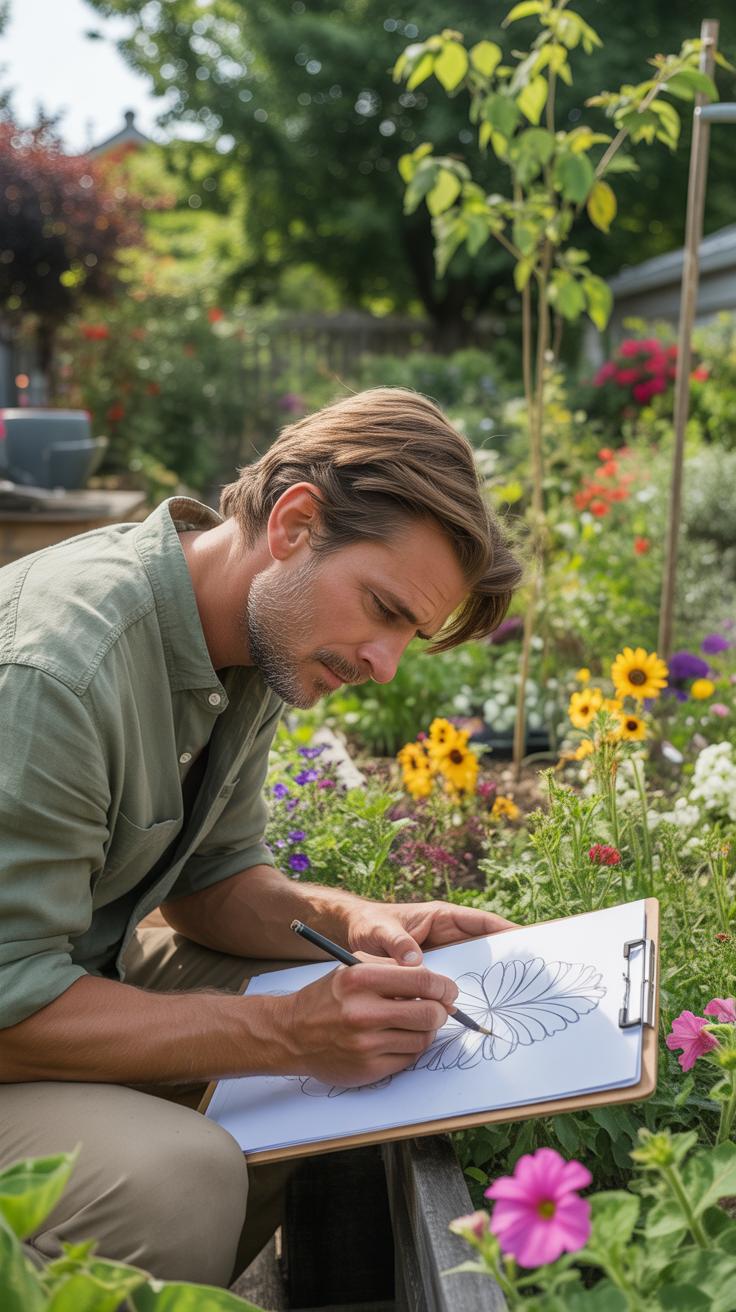
Designing zones within a large backyard can feel a bit like solving a puzzle. You want areas for playing, dining, gardening, and relaxing, but how do you decide what goes where? Start by thinking about how you actually use your outdoor space. Do you imagine kids running around? Or is it more about quiet evenings under the stars? Your lifestyle really steers the design here.
Setting zones means dividing your yard into clear sections that serve different purposes. You might carve out a corner for a garden with raised beds and compost bins. Nearby, a dining spot with a sturdy table and comfortable chairs could make evening meals special. A grassy play area needs enough room for games and maybe a swing set. Somewhere quieter, a shaded bench or hammock invites relaxation.
Next, consider flow and access. Paths should connect zones smoothly without feeling forced. Sometimes a winding gravel path works better than a straight line—giving a sense of discovery as you move through your yard. Entrances to each area should be welcoming but distinct, guiding guests without signs. Think about how you and your family walk through the space every day. Where do you want to pause? Where should movement be effortless? These choices affect both function and mood, making outdoor living feel intuitive rather than cramped.
Choosing Plants Wisely
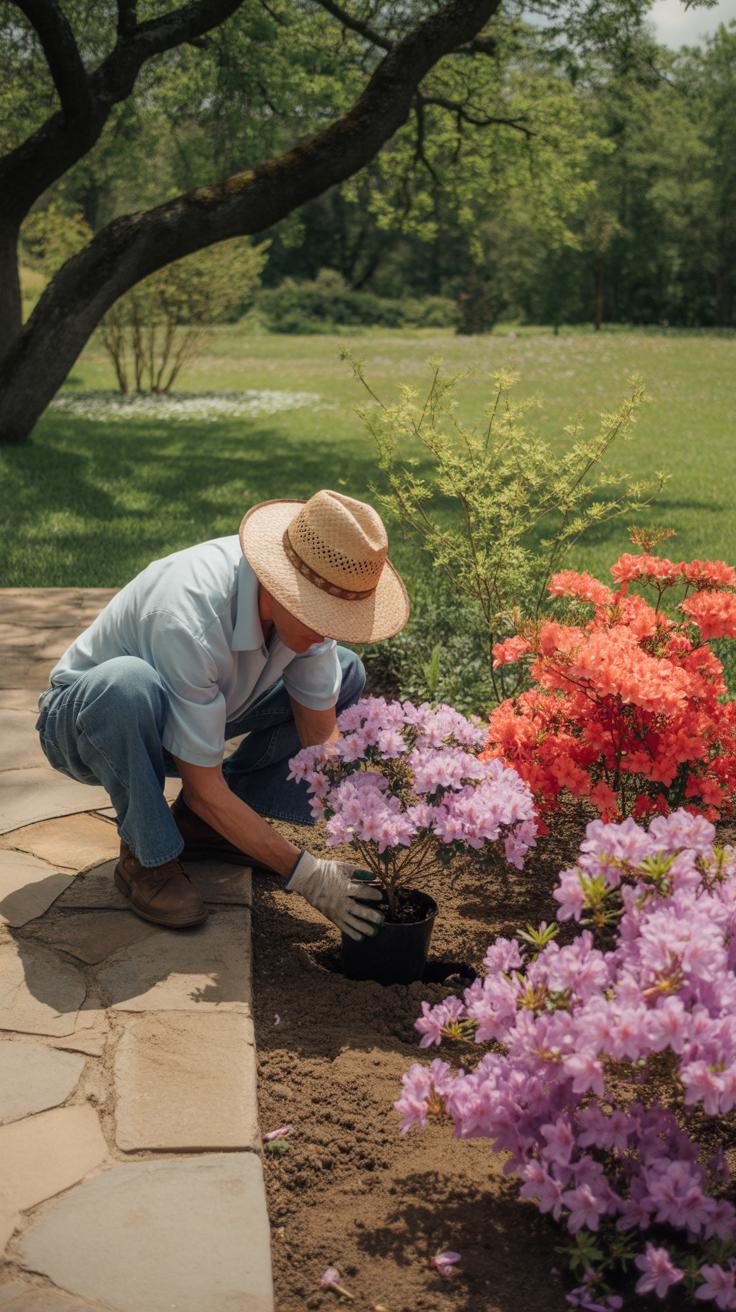
Picking the right plants for a large backyard isn’t just about what looks good. You need to think about your climate—plants that thrive in one area might struggle in another. For example, if your summers get hot and dry, drought-tolerant species will save you a lot of worry. Soil matters too. Clay-heavy soil holds water differently from sandy soil, changing what plants can handle or what amendments you might need. Sometimes I’ve been tempted by a stunning flower but later realized it demands a lot of extra care I wasn’t prepared for.
Native plants are often a smart bet. They naturally fit your local conditions and need less water and fertilizer. Beyond saving time, they support local wildlife, like bees and butterflies. I recall planting native grasses in one spot, and honeybees showed up more often than I expected. Of course, natives don’t mean boring—there’s surprising variety, from colorful wildflowers to textured shrubs.
When mixing plants, think about color and texture, but don’t feel boxed in by rules. Combining broad, smooth leaves with fine, feathery ones creates a subtle balance. Bright yellows next to deep purples can feel lively without overwhelming the eye. I’ve found that staggering blooms through the seasons keeps things interesting, though sometimes it feels like juggling. Do you want a quiet, restful palette or something that catches your attention at every turn?
Building Pathways and Edges
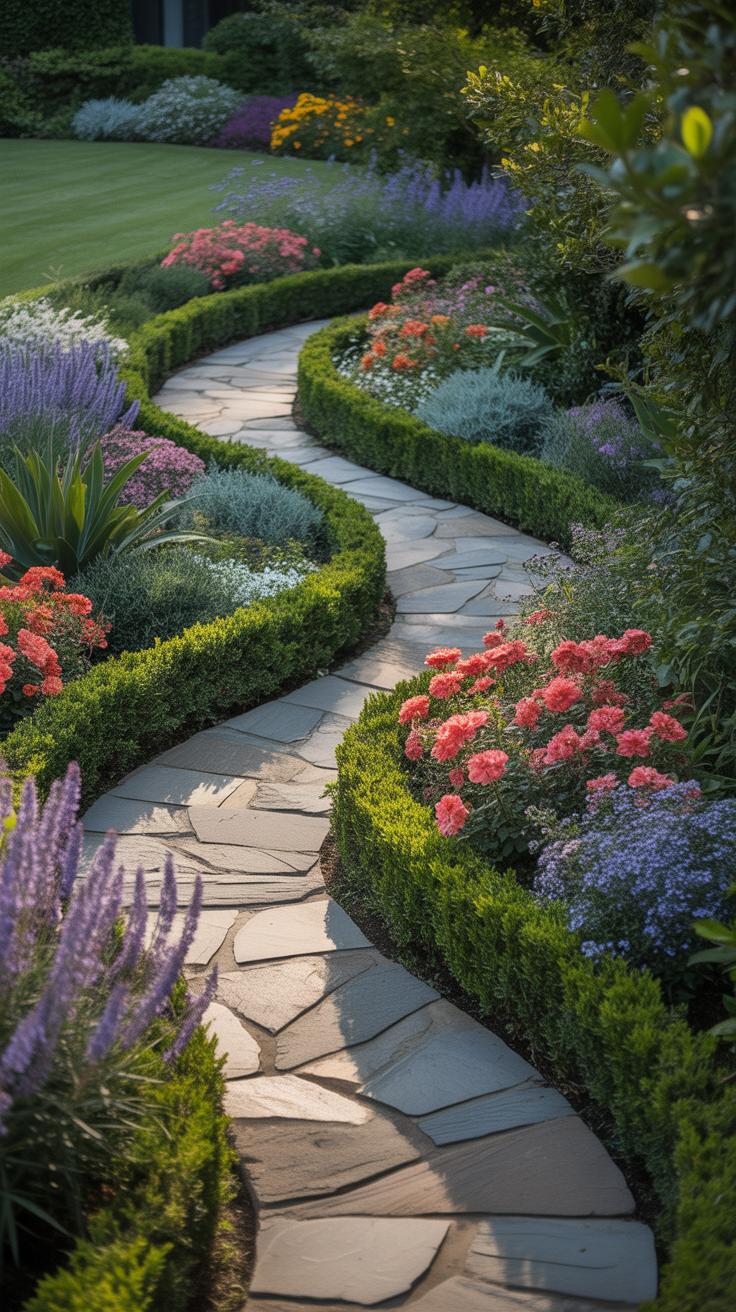
The way you create pathways and borders in a large backyard can change everything about how you experience the space. Pathways don’t just connect spots—they shape how you move, where you pause, and even what you notice. Edges help keep things tidy, but they can also add a subtle layer of style and structure without feeling too rigid. I guess organizing a big yard without pathways is like trying to read a book with no chapters; it’s possible, but confusing.
Choosing the right materials is key. For paths, gravel works well because it’s affordable and drains water nicely, but it might scatter and can get messy. Pavers or bricks offer a cleaner look and more stability; though they’re pricier and need some effort to lay evenly. Concrete’s durable, but can feel a bit plain or cold if you’re aiming for a natural vibe. For edges, consider metal or stone—they hold soil back well, but metal can rust, and stone might shift over time if not set properly. Wood is cozy and blends with plants but rots eventually unless treated.
Layout matters a lot. Straight paths suggest formality and directness—good for quickly getting from A to B. Curved paths invite exploration, slow you down, and create mystery in your garden. Maybe mix the two: a straight main path with gentle curves to side seating areas or flower beds. Think about defining zones too—walkways can separate a play area from a vegetable patch, or an outdoor dining spot from a lawn. Do you want visitors to discover your yard step-by-step, or just head straight to the barbecue? Your path choices will guide that experience quietly but firmly.
Incorporating Water Features
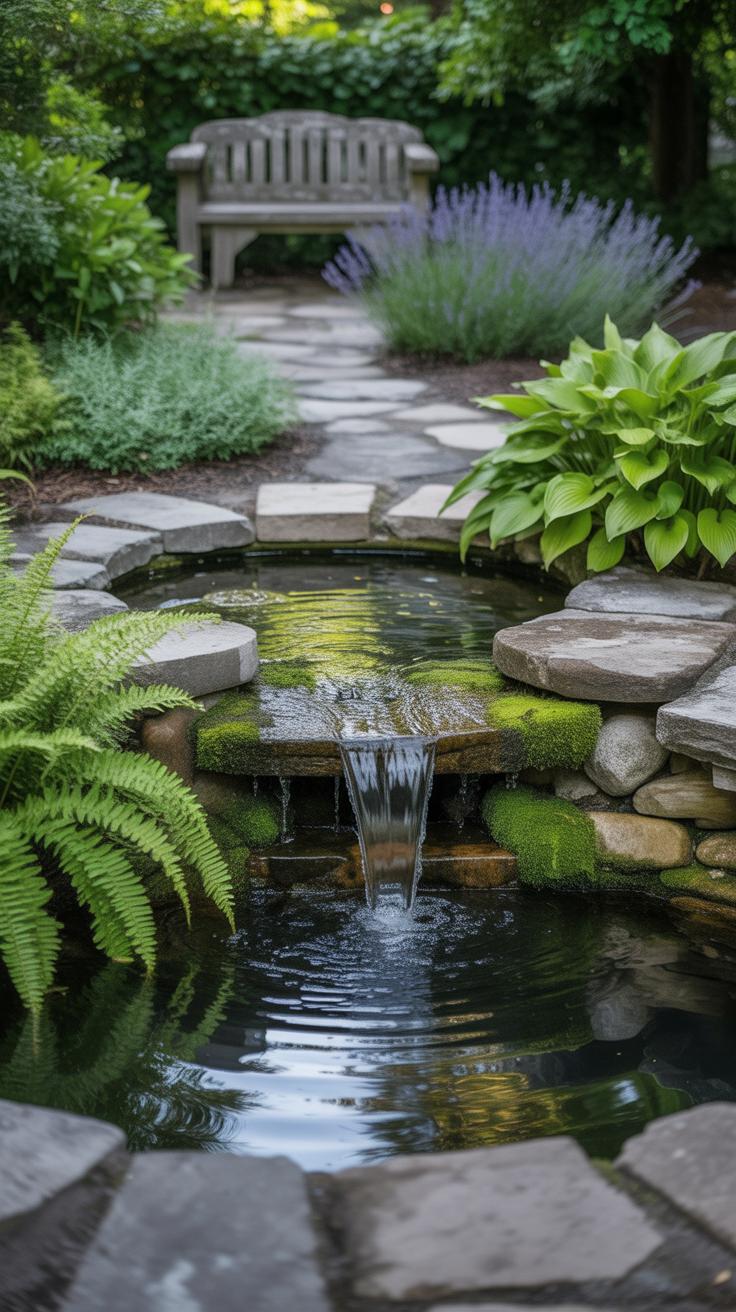
Adding water elements like ponds, fountains, or streams can change the feel of a large backyard in surprising ways. They don’t just break up the space but create spots of calm that invite you to pause—or maybe just linger a little longer outdoors.
Picking the right feature depends a lot on your yard’s size and style. For a vast open area, a pond with gentle edges works well, giving a somewhat natural feel. Small fountains might feel lost there, but a full stream weaving through can add movement and sound without overwhelming. If your yard is more structured or modern, sleek fountains or minimalist reflecting pools might fit better.
Maintaining these features usually takes more effort than many expect. Leaves, algae, and debris can pile up quickly, and you’ll want to check pumps and filters regularly to keep water clear and flowing. I found that using a net to skim surfaces weekly, and installing a UV clarifier to control algae, made a big difference. It’s almost like caring for a small pet—if you skip a few days, the water gets unhappy.
Still, the gentle sound of flowing water, and the way it cools the air on a warm afternoon, make it worth considering. What kind of water presence feels right to you? Would you want something visually bold, or more of an understated feature that blends into the greenery?
Creating Outdoor Living Areas
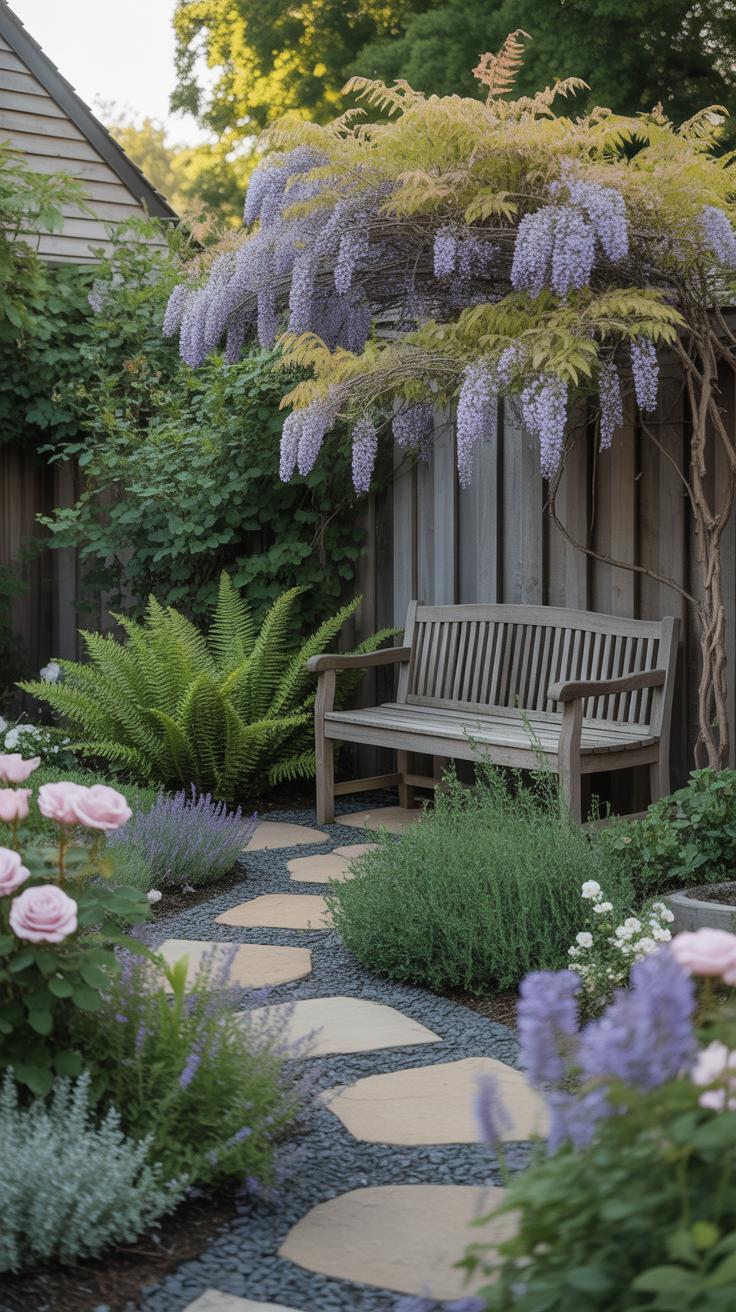
Patios, decks, and seating zones extend your living space beyond walls, turning a large backyard into a place you actually want to spend time. These areas invite you to linger—whether for morning coffee or evening chats. Comfort plays a huge role here. A well-designed patio or deck gives you a stable surface and defines a spot for gatherings, while seating zones create natural conversation hubs.
You might wonder if it’s really necessary to carve out separate spaces in such a big yard. My experience says yes, because without them, a large area can feel empty or overwhelming. Plus, these spaces encourage use throughout the year, especially when paired with good shade or shelter options.
Choosing Furniture
Picking outdoor furniture isn’t just about looks. Durability matters a lot—rain, sun, and wind take their toll. Materials like teak, metal, or synthetic wicker resist wear better than cheaper woods or fabrics. Comfort also can’t be overlooked—after all, it’s where you relax.
Think through what activities you want the furniture to support. Loungers for naps? Dining sets for family meals? Mixed setups might work best. And don’t shy away from cushions—they can brighten a space but do require occasional upkeep. I once opted for a metal frame with weather-resistant cushions, and it’s been a solid balance between comfort and longevity.
Shade and Shelter
Your outdoor living area won’t get much use if the sun beats down too harshly or a light rain hits. Adding umbrellas or pergolas solves this. Umbrellas are flexible—you can move them around or collapse them when not needed. Pergolas offer style and structure that can define a space more permanently.
Consider adjustable options. Retractable awnings or pergolas with climbing plants add shade but can let the light back in when you want. Shelter doesn’t just protect; it adds a layer of coziness. Finding the right balance between protection and openness can take a little experimenting but changes how you use your backyard, maybe more than you expected.
Installing Lighting
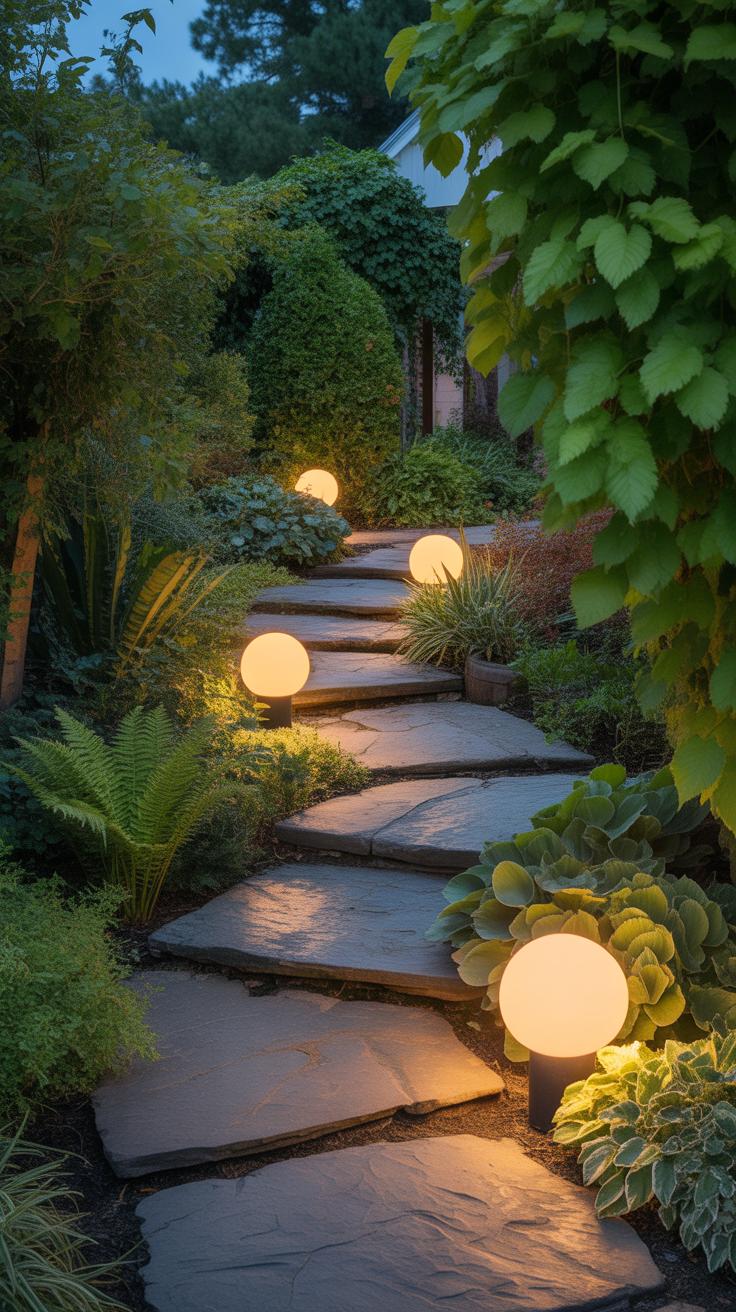
Lighting makes a noticeable difference in how you use your backyard once the sun goes down. It doesn’t just extend your time outside—it also boosts safety around steps, paths, and any tricky corners. I remember one evening when the subtle glow from pathway lights stopped me from tripping over a garden hose. That small detail changed how comfortable I felt wandering out late.
Apart from safety, lighting highlights what you want to draw attention to: a statue, a tree, or your cozy seating area. It can set a mood too—whether a soft welcoming glow or a bright focal point. This mix shapes how your backyard feels after dark, making it more inviting and alive.
Types of Lighting
There’s no one right kind of lighting for every place. Different lighting serves different needs, and combining them works best.
- Pathway lighting: Usually low and spaced out, these lights guide your way, preventing stumbles. They’re simple but crucial.
- Spotlights: These pinpoint features you want to showcase. A well-placed spotlight can transform a plain tree or sculpture into a striking centerpiece.
- Ambient lighting: This softer, broader light fills seating or dining zones. It doesn’t glare but creates a relaxed atmosphere.
You might even mix solar lights with wired systems, depending on your setup and budget. It’s a bit of trial and error sometimes—what fits your style and space.
Energy Savings
Lighting your large backyard can seem like a big energy drain, but there are smarter ways to manage it. Almost always, LED bulbs are the better choice—they last longer and use less power than traditional ones, making them cost-effective in the long run.
Placement matters too. Instead of flooding the whole yard with bright light, focus on spots that need it most:
- Paths and entrances
- Gathering areas
- Eye-catching plants or features
Using timers or motion sensors can cut down waste. Lights only come on when needed, which feels clever sometimes, but also like letting your garden decide when to light up. It makes you wonder if you’re just guessing or if there’s a better method you haven’t tried yet.
Maintaining Your Backyard
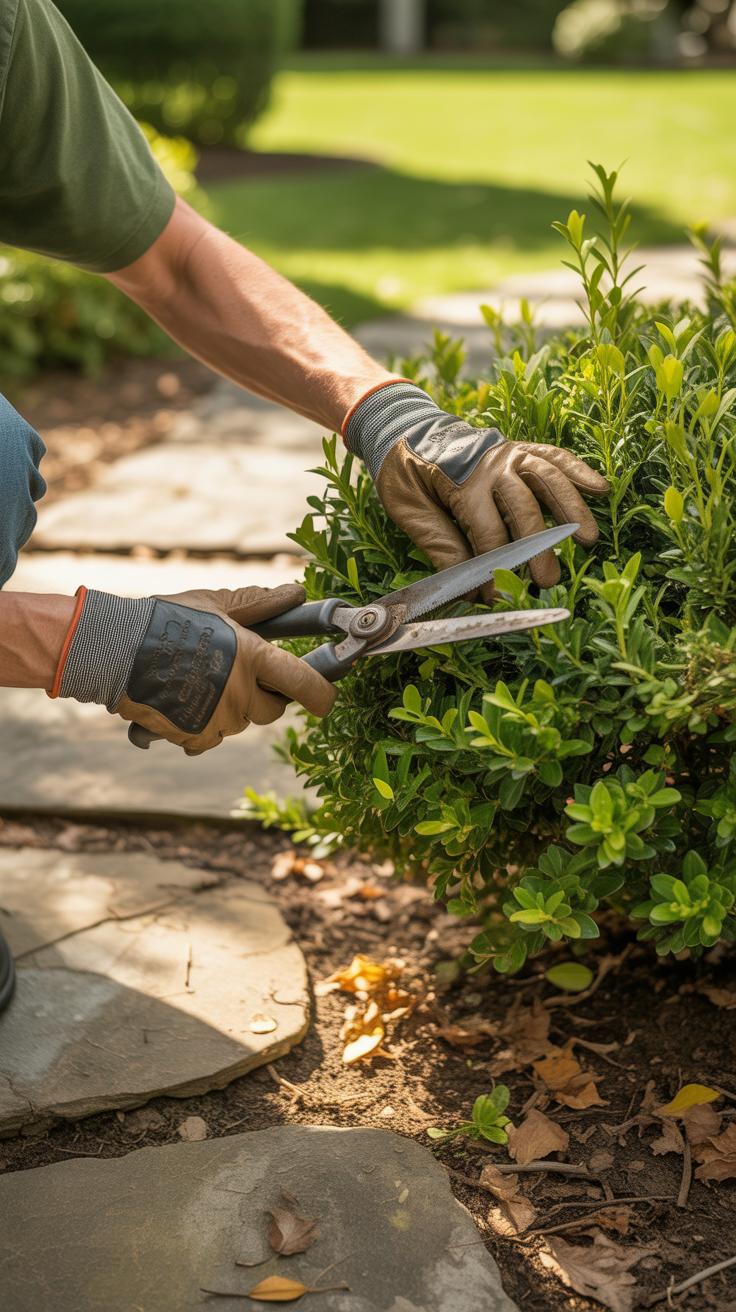
Keeping a large backyard in good shape can feel like a full-time job, but it doesn’t have to be overwhelming. Regular routines go a long way in keeping plants healthy and your space neat.
Watering and Feeding
Different plants demand different watering schedules. For example, young trees often need deep watering once a week, while annual flowers might require more frequent, lighter watering. A drip irrigation system can help keep this consistent without making it a chore. When it comes to fertilizers, slow-release formulas work well for many shrubs and grasses. But don’t forget—too much fertilizer can harm plants just as much as too little. Sometimes just feeding your lawn in early spring and fall is enough.
Seasonal Care
Seasonal maintenance is pretty straightforward but changes a lot with the calendar. Spring usually means clearing away debris, pruning damaged branches, and preparing soil for new growth. Summer care often focuses on consistent watering and checking for pests. Fall is the time to rake leaves before they build up and mulch beds to protect roots in winter. And winter? Well, it’s mostly a waiting game, though protecting sensitive plants with burlap or covers can make a difference.
Adding Personal Touches
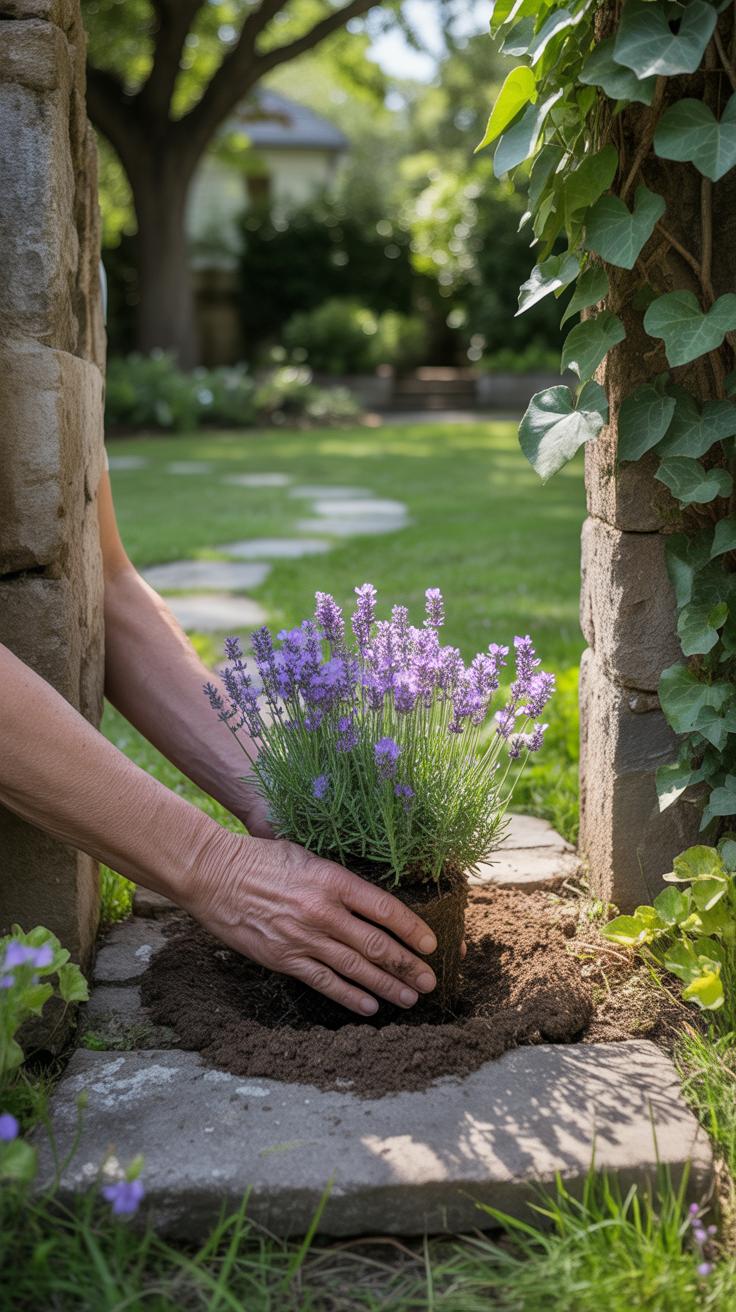
Making a large backyard truly yours means weaving in elements that speak to your personality. Art and decorations aren’t just fillers; they bring character and spark conversations. You might place a sculptural piece near a seating area, or string lights in unexpected patterns that frame your favorite spots. Think beyond typical garden gnomes—maybe a metal wall art panel mounted on a fence, or a collection of colorful ceramic pots arranged casually. These touches can feel subtle or bold, depending on what feels right to you.
Custom features offer another chance to shape the space uniquely. For example, building your own raised garden beds allows you to choose shapes and materials that match your taste. A fire pit carved from stone adds warmth and a gathering point, while a play area can be designed with natural wood structures that blend with the surroundings. Sometimes, those small design quirks—like a hidden bench tucked behind tall plants or a weatherproof hammock—make the biggest difference.
What’s your style? Do you prefer clean and modern lines, or something more rustic and eclectic? Let your backyard reflect those preferences, bit by bit. It can feel slow, uneven—even a little messy at times—but that’s part of the charm. After all, a large backyard is a canvas, but it’s also your home.
Conclusions
Careful planning and smart choices are essential for successful large backyard landscaping. Understanding your land helps you decide where to place features and plants for the best use and look. Dividing your space into zones supports different activities and brings order.
With a good plan, chosen plants, and simple structures, your outdoor space can become more enjoyable and attractive. Keep your maintenance routine consistent to preserve your backyard’s beauty. This approach makes sure your efforts last and your large backyard remains inviting.


